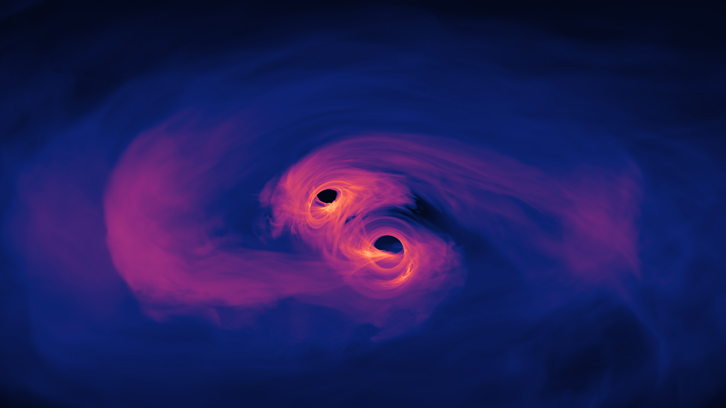The power of LISA: the future on gravitational waves detection

Since Einstein's predictions, physics had to wait 100 years for the detection of the first gravitational waves. The European Space Agency and NASA have initiated the LISA project, a mission without yet a final configuration that consists of a set of 3 satellites capable of such detection. A UAB research group has delved into the capabilities of the mission to conclude that, in addition to detecting gravitational waves, it would also serve to verify fundamental ideas about space-time, advance the properties of dark matter or even measure the rate of expansion of the universe.
We are living in an amazing era in the quest to understand our Universe. Indeed, only since 2015 we can explore the deep space not only with light, but also with gravitational waves. The detection of these waves, first predicted by Einstein, and that took over 100 years to find, has revealed a violent Universe where black holes 30 times larger than the Sun, merge generating enough energy to vaporize a Galaxy... still not producing any signal visible to any telescope.
The European Space Agency (https://www.cosmos.esa.int/web/lisa) and the NASA (https://lisa.nasa.gov/) have teamed up to take this exploration to the next level. The LISA Mission (Laser Interferometer Space Antenna, https://lisamission.org/) will study gravitational waves generated by the supermassive black holes residing at the center of most galaxies, those from a huge number of stellar systems and has the potential to be sensitive to those gravitational waves created when the Universe was very young (so young that no other signal from that era can reach us). To do this, the Mission will deploy a constellation of three satellites in space, at more than 2 million of kms from each other and 50 million kms from Earth. Gravitational waves affect the relative motion of satellites falling in gravitational fields, which will be tracked to high precision by on-board lasers. This effect is larger for larger separations, which explains why the largest distances are advantageous.
This article summarizes the effort of one of the working groups of the LISA mission to assess its capacities to find exciting physics, depending on the final configuration that will fly (still under discussion). We show how LISA can be used not only to detect the previous astrophysical objects, but also to test fundamental ideas about space time, unveil the mysteries of dark matter or even measure the expansion rate of the Universe.
Our conclusion is that even the 'cheapest' configuration (meaning the shorter mission) will provide new data about the existence and evolution of several extraordinary astrophysical configurations that remain poorly studied so far (in particular for galactic binaries or binaries of black holes of masses much larger than the Sun) and also has an unprecedented potential to detect new physics (in particular gravitational waves from the primordial Universe, right at the heart of the Big Bang). Still, it makes sense to push for the longest possible mission of around 4-years to maximize the discovery potential.
LISA will fly in around 10 years, opening a new window into the Universe. It is extremely exciting to think about which new phenomena will be unveiled by this historical milestone of the humankind.
References
Amaro Seoane, P., Arca Sedda, M., Babak, S. et al. The effect of mission duration on LISA science objectives. Gen Relativ Gravit 54, 3 (2022). https://doi.org/10.1007/s10714-021-02889-x


